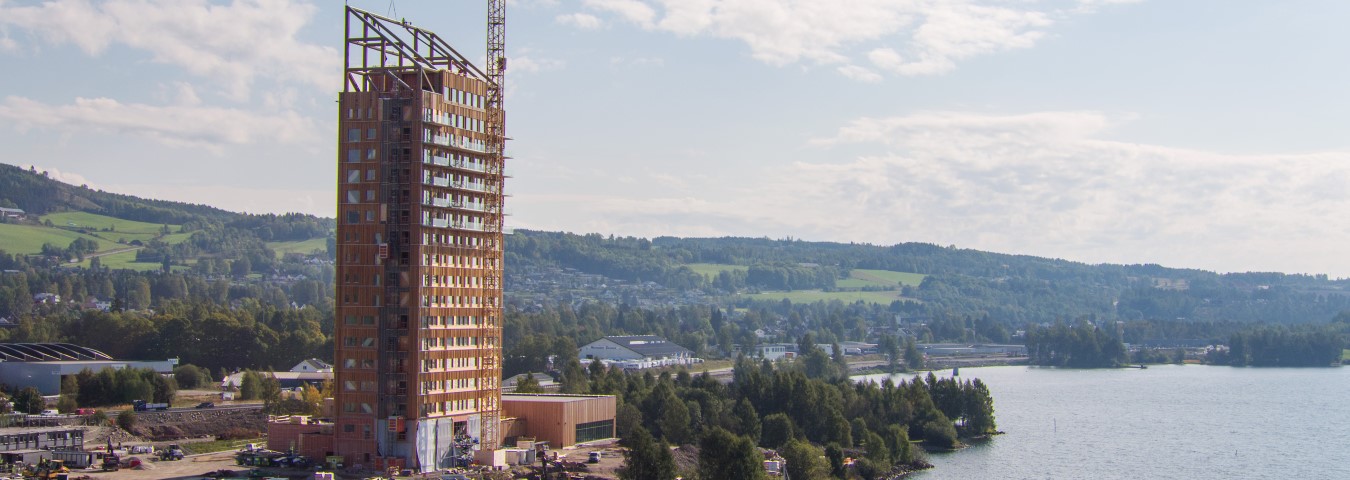
Skelleftea is a moderately small city in Sweden, surrounded by forest. It is an industrial city known for its gold mining industry and the wooden architecture of the homes surrounding it. In 2016, Skelleftea became known for something else, as Sara Kulturhus, an award-winning cultural center designed by White Arkitekter, opened its doors to international acclaim. This property is an incredible mixed-use building that serves as the defining building of the region and a reminder of the enduring value of wood-based design.

Sara kulturhus is a unique piece of architecture for a variety of reasons. One of the things that stands out most about it is that it is the world’s third tallest wooden structure. With 20 stories that vary in use, this incredible feat of design tops out at the height of just under 80-meters. Designed by White Arkitekter’s Oscar Norelius and Robert Schmitz, the Sara kulturhus honors the city’s long tradition of constructing buildings with wood.

This project shows definitively that wood is making a major comeback in architecture. Wood-based design was recently considered old-fashioned, but its benefits are significant enough to spur a return. Wood architecture is much quicker than other forms like steel and concrete. In fact, Sara kulturhus was able to have a 60% shorter construction time due to the usage of wood as the base.
One of the biggest reasons wood has returned as a structural building block is crossed-laminated timber or CLT. CLT has made it easier, safer, and more viable to create high-rise wooden structures. This has led to architectural wonders like the Mjöstårnet Tower in neighboring Norway, the world’s tallest wooden structure, and the Swatch and Omega Campus in Switzerland.

Probably the biggest reason for the return to wooden design is the sustainability benefits it provides, and Sara kulturhus lives up to this ideal. Sara kulturhus is built from 12,000 cubic meters of trees harvested in a 60km radius of its location. Each tree that was harvested was replaced with young trees, greatly reducing the ecological cost of the material.

Sara kulturhus’ sustainability goes beyond just the material that was used to make it. The building is entirely powered by 100% renewable energy. The building utilizes solar energy, batteries, a heat pump, and an Artificial Intelligence control system that regulates the temperature. The building also provides clean energy to the surrounding town, playing a part in Skelleftea’s mission to be a sustainable city. Sara kulturhus is a shining example of the potential for the creation of technologically advanced sustainable buildings.

Sara kulturhus is named after famed Swedish author Sara Lidman, and the building’s use reflects the creative spirit of its namesake. Sara kulturhus functions as a cultural hub, the center of the town’s art and entertainment. The first four floors are a cultural center which includes a theater with six stages, a museum, the Skelleftea Art Gallery, the city library, and a large cultural staircase that serves as a meeting and viewing spot. The building is a vibrant, beautifully designed setting that holds large collections of the town’s best art and literature, and is a stage for fun and exciting performances.

Beyond being a cultural hub and town center, Sara kulturhus is also the site of The Wood Hotel by Elite Hotels. This is the town’s central hotel, offering 205 luxurious and modern hotel rooms, a large conference room that can accommodate up to 1,200 people, and a restaurant and a sky bar with a rooftop terrace. There will also be an incredible spa that is specially designed, that melds perfectly with the natural atmosphere fostered by the building’s wood design.

In the heart of Skelleftea sits a one-of-a-kind building that is the center of the town’s artistic, cultural, and tourism industry. It is a building that reflects the return to prominence of wood-based architecture, and the material the building is made from reflects the town’s history and location. As an entirely sustainable building, Sara kulturhus is an incredible example of the type of future-forward design that we should hopefully only see more of. With wood-based architecture and sustainability design on the rise, Sara kulturhus shows the promise and beauty this form holds.

